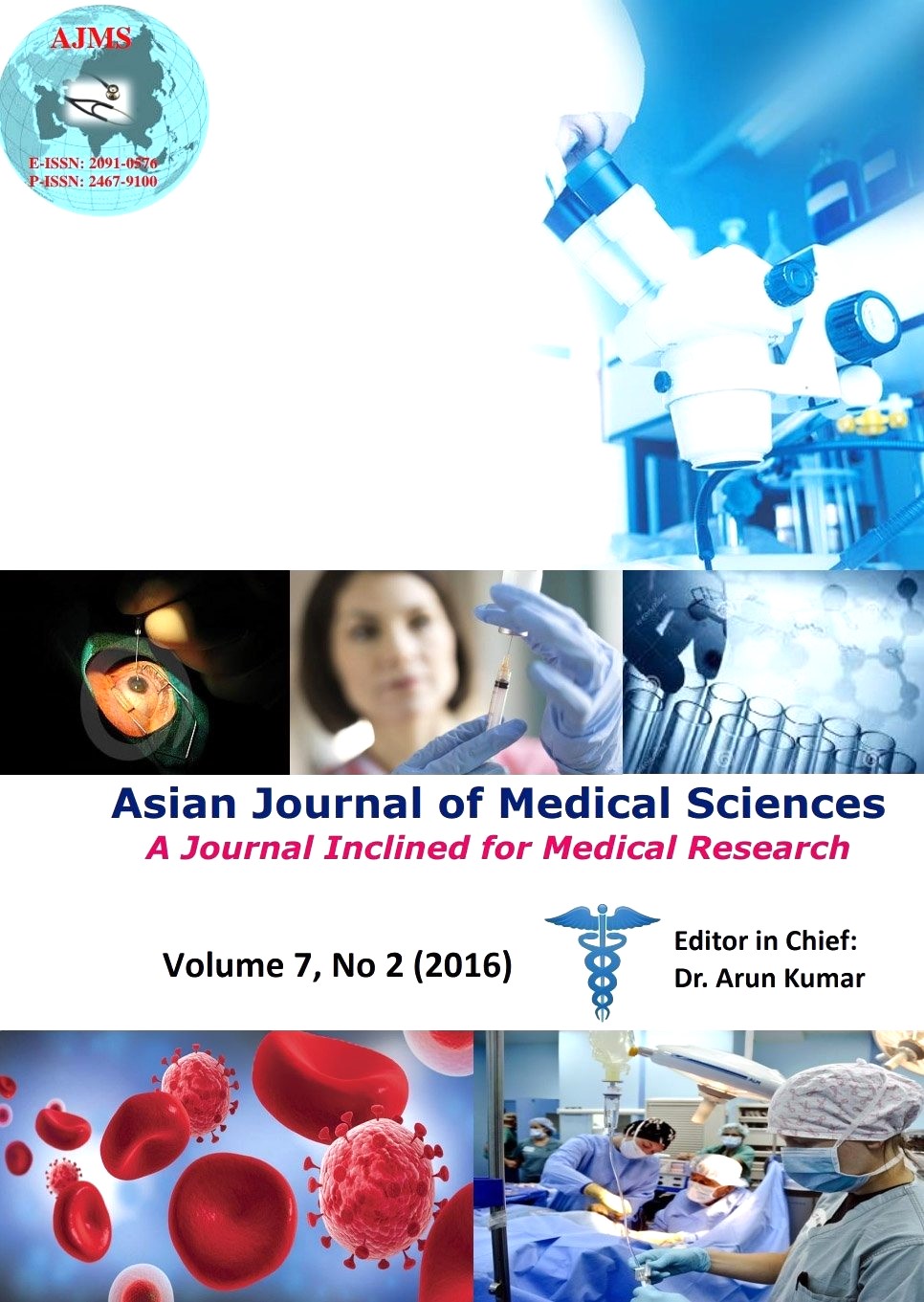Effect of Cobb angle and BMI on scoliosis surgery recovery in adolescent idiopathic scoliosis patients
Keywords:
Adolescent idiopathic scoliosis, Cobb angle, Body Mass IndexAbstract
Aims and Objectives: To assess the effect of Cobb angle and body mass index (BMI) on surgery recovery outcomes in Adolescent Idiopathic Scoliosis (AIS) patients.
Materials and Methods: A retrospective study of 79 Adolescent Idiopathic Scoliosis patients who underwent corrective operations, at King Khaled University Hospital, Riyadh, Saudi Arabia was carried out in 2014. The patients were divided according into Cobb’s angle (mild, moderate and severe) and as per weight (healthy weight and overweight). Data of preoperative, intra-operative and postoperative information as well as measures of daily-living activities were collected.
Results: The mean age of 79 patients (70females) was 16.6 years. Cobb angle assessment was mild in 41 (51.9%), moderate in 24(30.4%) and 14(17.7%) were severe. Mean surgery and recovery time of patients is statistically significantly different in relation to severity of Cobb’s angle (mild, moderate and severe). There is highly statistically significant difference in mean ranks of days taken for different measures of daily living in relation to severity of Cobb’s angle. The mean values of body mass index have significantly reduced after surgery, when compared with mean values at before surgery. The mean surgery time was statistically significantly higher in over weight patients (5.33 hours).
Conclusions: The results show an effect of severity of Cobb angle on recovery measures of patients with AIS, but no effect of BMI. BMI was corrected in these patients after surgery. Prospective studies are required to assess clinical outcomes of post-operative surgery, satisfaction of patients towards their body image and quality of life.
Asian Journal of Medical Sciences Vol.7(2) 2015 28-33
Downloads
Downloads
Published
How to Cite
Issue
Section
License
Authors who publish with this journal agree to the following terms:
- The journal holds copyright and publishes the work under a Creative Commons CC-BY-NC license that permits use, distribution and reprduction in any medium, provided the original work is properly cited and is not used for commercial purposes. The journal should be recognised as the original publisher of this work.
- Authors are able to enter into separate, additional contractual arrangements for the non-exclusive distribution of the journal's published version of the work (e.g., post it to an institutional repository or publish it in a book), with an acknowledgement of its initial publication in this journal.
- Authors are permitted and encouraged to post their work online (e.g., in institutional repositories or on their website) prior to and during the submission process, as it can lead to productive exchanges, as well as earlier and greater citation of published work (See The Effect of Open Access).




